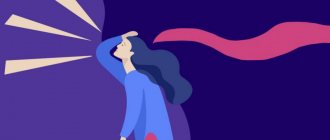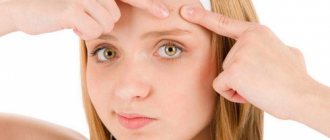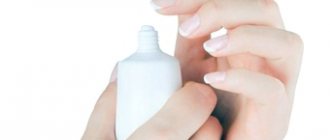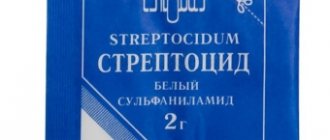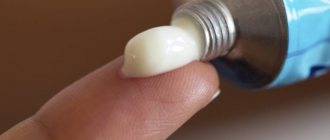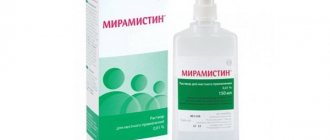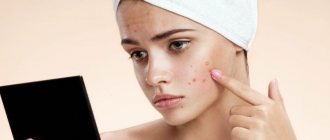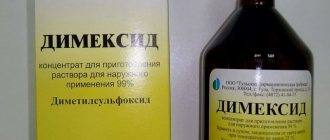Kinds
Acne is treated with pharmacological agents of natural (rare) or synthetic (much more often) origin. They help slow down or completely stop the activity of microbes.
According to the mechanism of action, doctors divide these drugs into two large groups:
- Bactericidal , which cause the death of microbes.
- Bacteriostatic , inhibiting the growth and reproduction of pathogenic microorganisms.
Only the doctor decides which antibiotic to choose for acne. In this case, several factors are taken into account - the patient’s age, acne severity, tendency to allergies, existing diseases and much more. The doctor will also help you choose the exact time to take the drug, choose the optimal period for treatment and the duration of the course.
You cannot stop taking antibiotics for facial acne on your own. Despite the fact that the rash has completely disappeared and the skin looks healthy, there is a high probability of a relapse of the disease. Therefore, you must strictly follow all the doctor’s recommendations and take the drug for the recommended time, without decreasing or increasing it.
All antibiotics for the treatment of acne can be divided into topical (local) and systemic (for oral administration). The list of drugs will be indicated in this article just below.
Classification
A classification that groups acne according to the presence of inflammatory signs allows them to be divided into non-inflammatory and inflammatory. Acne of the first type is represented by:
- open comedones (blackheads or blackheads);
- closed comedones (whiteheads or whiteheads).
Acne of the second (inflammatory) type is represented by:
- papules (nodules);
- pustules (pustules);
- cysts.
There is also a whole group of skin lesions - dermatoses, accompanied by the formation of acneiform acne, represented by rosacea, drug rash, rosacea, small nodular sarcoidosis of the face, perioral dermatitis, and skin tuberculosis. They have nothing to do with acne.
According to the classification of Kligman and Plevig, acne can be:
- children's;
- youthful;
- adults;
- exogenous;
- caused by the influence of mechanical factors.
Read more: How to quickly remove antibiotics from the body after treatment
Topical
Gels, creams, mash-ups, acne ointments with antibiotics are always applied only to the affected areas of the skin. It is these drugs that are usually classified as topical pharmacological agents.
The main advantages when choosing drugs for external use are the absence of systemic effects on the entire body. But treating acne with topical antibiotics also has a lot of disadvantages.
- After the last application of the product to the skin, a relapse of the disease may occur at the end of the course.
- Local skin immunity is reduced, since the active substance of the drug, and in our case it will be antibiotics, kills not only harmful, but also beneficial microorganisms.
- An allergic reaction may develop at the site of application - itching, redness, swelling, peeling.
Often, local antibiotics against acne are prescribed along with systemic antibacterial drugs. But for mild acne, the doctor can prescribe them without the use of additional medications.
Prevention of complications of antibacterial therapy
Treatment of acne with antibiotics should be carried out strictly according to the schedule prescribed by the attending physician.
At the first symptoms of side effects, it is recommended to immediately contact your doctor.
Antibiotics used for acne often provoke disturbances in the gastrointestinal tract, therefore, after their discontinuation, a course of probiotics is recommended to restore normal intestinal flora.
During treatment, you should take plenty of fluids to reduce the risk of complications and remove waste and toxins from the body, which can also cause acne.
What antibiotics for acne for external use
Most often, topical antibiotic preparations have a bacteriostatic effect. The main dosage forms can be:
- Ointments.
- Gels.
- Lotions.
- Chatterboxes.
- Creams.
- Solutions.
It is recommended to apply them either to the entire affected area of the skin, if there are too many pimples or blackheads, or only specifically to the site of inflammation. The list of topical antibiotics for acne is quite long. But we have collected for you only modern and actually effective drugs.
Eriderm
This is a good antibiotic for acne in the form of a solution for external application. The drug contains erythromycin, which inhibits the growth and development of propionic bacteria. The main indication for use is juvenile acne, also called vulgar acne.
It is recommended to apply the product to previously cleansed facial skin using a cotton pad in the morning and evening, avoiding contact with the mucous membrane of the eyes or mouth.
Zerkalin
The anti-acne remedy with the antibiotic mirrorin contains clindamycin, which, once on the inflamed skin, begins to actively inhibit pathogenic microbes. Can be used independently as an anti-acne remedy, or simultaneously with the prescription of tablets.
It should be applied to areas of inflammation twice a day - morning and evening. Before application, clean the skin with a soft gel.
Usually it does not give any side effects; in rare cases, dryness and flaking may develop, which can be solved by using a moisturizer.
Klindovit
Antibiotic cream for acne on the face, clindovit, based on clindamycin, is a long-known and well-proven remedy. The duration of one course of use can be up to 3 – 5 months. It is often prescribed simultaneously with medications based on benzoyl peroxide.
Side effects
Negative manifestations may occur with the use of this macrolide antibiotic. The most common of them:
- organs of the gastrointestinal tract and digestive system: digestive disorders, vomiting, colitis, constipation, jaundice, nausea, loss of appetite, signs of pancreatitis, damage to the mucous membranes of the oral cavity (in children), gastritis, diarrhea;
- ODA (musculoskeletal system): myalgia, osteoarthritis, pain in the neck and back, arthralgia;
- infectious lesions: pseudomembranous form of colitis, gastroenteritis, pharyngitis, pneumonia, rhinitis, respiratory pathologies;
- circulatory system and heart muscle: changes in the frequency of contractions of the heart muscle, pain in the chest area from the heart;
- urinary and reproductive systems: candidiasis, urinary retention, change in urine color;
- central nervous system and main sensory organs: headache, deterioration in spatial orientation, dizziness, increased fatigue, ringing in the ears, increased nervous excitability and anxiety, sleep disturbances, temporary hearing loss;
- allergic manifestations: skin itching, rashes, anaphylactic reactions (in rare cases);
- other: eosinophilia, bronchial spasms.
To avoid negative reactions, before using an antibiotic, you need to talk with a medical expert and undergo all the necessary examinations to check for contraindications and possible complications.
You should not take a spoiled drug, as this may cause negative reactions. To avoid spoilage of the drug, it should be stored in a dry and shaded place. It is not advisable to use a freezer or refrigerator for this, since the optimal temperature for storing the medicine is within +15...+25°C. The shelf life of the antibiotic is 24 months from the date of production.
Keep the medicine away from children
Effective antibiotics for acne combined action
An anti-acne cream, ointment or lotion with an antibiotic may also be a combination drug. That is, in addition to the antibacterial agent, it will also contain another substance that also helps in the fight against acne.
Zenerite
This is a popular acne lotion that contains not only the antibiotic erythromycin, but also zinc acetate. Therefore, in addition to the bacteriostatic effect, the drug also has a drying effect and is good at helping to cope with excessive sebum production.
Zinerit copes well with acne at the initial stage, as well as in the treatment of moderate acne.
In rare cases, after a full course of therapy, a relapse of the disease may develop after some time.
Benzamycin
What antibiotics are best for acne? Basically this is a drug such as erythromycin. It is this medicine that is contained in benzamycin gel. The second important component is benzoyl peroxide.
The gel has a pronounced antibacterial effect, helps cleanse the sebaceous glands and prevents the appearance of new comedones. Most often used in combination therapy for acne of the first and second severity.
Klenzit S
Acne antibiotic gel klenzit C is one of the most popular products. The drug contains clindamycin and adapalene, which belongs to the group of retinoids.
Together they suppress the development of bacterial microflora, normalize the process of keratinization and cleanse the epidermis. In addition to the therapeutic effect, the drug can also be used for prophylactic purposes to prevent the reappearance of acne, pimples and comedones, both open and closed.
Definition and types of acne, pimples, acne
Before we move on to talking about the treatment of different types of acne, let's try to understand the terminology:
- The term acne refers to an inflammatory skin disease caused by pathological changes in pilosebaceous structures consisting of sebaceous glands and hair follicles. The term is collective and is often used to refer to both pimples and blackheads.
- Acne, represented by eruptive elements or pimple-like tubercles, is a private manifestation of acne caused by infection of the sebaceous glands.
- Pimples (they are often called both blackheads and acne), which are another relapse of the acne disease described above, look like small inflamed tubercles on the surface of the skin.
- Comedones are sebaceous plugs, consisting of particles of desquamated epithelium and thick sebum, clogging the mouths of hair follicles. Inflammation of comedones leads to the formation of pimples (blackheads).
Tablets and capsules
Systemic antibiotics are prescribed for oral administration. This is a large group of drugs that can be divided into several subgroups depending on what the active substance is.
- Penicillins – flemoxin solutab.
- Lincosamines – lincomycin, clindamycin.
- Tetracyclines – doxycycline, tetracycline, minolexin.
- Macrolides – erythromycin, vilprafen.
All medications on the list are highly bioavailable, accumulate well in the sebaceous glands and help quickly suppress the growth and reproduction of microbes and bacteria that cause acne.
Systemic antibiotics for acne are often prescribed with topical benzoyl peroxide products and also in combination with retinoids.
This makes it possible to increase the effectiveness of treatment, reduce its duration and prevent the development of addiction.
Tetracycline
Tetracycline is an antibiotic for facial acne , which is available in tablet form. This drug is highly soluble in fats, quickly accumulates in the sebaceous glands, and has excellent antimicrobial activity against propionic bacteria. They are the main provoking factors for the development of acne and pimples.
Tetracycline has excellent bioavailability and excellent efficacy. For acne, a dermatologist prescribes tetracycline in low doses for a period of 2 to 4 months. For acne, 0.1-0.15 grams per day is prescribed in divided doses. If the condition improves (usually after 3 weeks), the dose is gradually reduced to a maintenance dose of 0.125-1 g.
When treating acne with tetracycline, the patient may experience the following side effects:
- Dysbacteriosis or other disturbances in the functioning of the stomach (intestines), which can be manifested by nausea, vomiting, pain in the stomach, and upset stool.
- Dizziness.
- Impaired kidney function.
- Violation of the formation of bone tissue and teeth.
- Increased sensitivity to ultraviolet radiation, which is called photosensitivity.
If you use the antibiotic tetracycline against acne on your face, you must remember that it is not safe to take it in the summer.
Along with the disappeared ulcers, areas of increased pigmentation and a large number of freckles will appear on the face. Also, when taking tetracycline in the summer, you should not visit a solarium, go to the beach or go out in the sun.
Tetracycline for acne is contraindicated in pregnant women and children under 18 years of age. This is due to the fact that the drug has a negative effect on bone formation and dental development in the baby.
Doxycycline
If acne appears on the body, the antibiotic doxycycline is often used for treatment. This drug is also a tetracycline drug, so it is practically no different from the previous drug. But doxycycline causes side effects much less frequently and is better tolerated by the patient when prescribed in minimal doses for a long time.
The average course of doxycycline acne treatment for facial acne is up to 12 weeks. According to reviews, the drug quite quickly allows you to get rid of large purulent rashes, severe itching, and redness. It is recommended to take 200 mg of the drug per day. Most often, one tablet contains 100 mg, so the drug in the treatment of acne and acne is prescribed 2 times a day.
Among the main side effects are:
- Reduced effectiveness of oral contraceptives.
- Inhibition of hematopoiesis.
- Negative effect on liver function.
- Manifestations of dysbacteriosis and candidiasis.
Doxycycline is also contraindicated during pregnancy and in children under 8 years of age.
Erythromycin
You can treat acne with antibiotics using erythromycin. However, it should be remembered that this medicine gives a positive effect only in the case of the very first use.
With repeated treatment of acne with erythromycin, the body develops addiction and the antibiotic becomes useless in treating acne.
The drug is used orally in tablets or capsules for a long time. The dosage is determined by the doctor individually, but most often it is 1 gram of the drug per day, which is equal to 4 tablets of 250 mg.
The drug is contraindicated during pregnancy and lactation. You can treat acne with erythromycin at any age.
Clindamycin
Clindamycin is an antibiotic that is used orally for acne. For acne, the duration of treatment should not exceed 10 days. The dosage regimen is the standard dosage - 150 mg at intervals of 6 or 8 hours. In severe cases, it is possible to increase the dosage to 300 or 450 mg.
A topical drug must be prescribed, for example, ointment or cream with clindamycin.
Clindamycin is produced in Russia under different trade names, but the main drugs that contain this active substance should be considered:
- Dalatsin.
- Mirror.
- Clindatop.
- Clindacin.
- Clindacil.
- Klindes.
- Klindovit.
Antibiotics for acne on the back, face, shoulders, and other parts of the body, if it is clindamycin, cannot be used simultaneously with drugs such as erythromycin, vitamins, or those medications that contain calcium or magnesium.
Flemoxin Solutab
What other antibiotics for acne on the face can be used orally? Many doctors recommend using amoxicillin-based drugs in treatment. One such medicine is flemoxin solutab.
For adults or children over 10 years of age, a single dose can range from 250 to 500 mg. The drug is taken 3 times a day, the interval between doses should be 8 hours.
Flemoxin should not be used simultaneously with other antibacterial drugs - cephalosporins, vancomycin, rifampicin, tetracycline, sulfonamides.
With long-term use, complete insensitivity of Propionibacterium acnes to this type of drug may develop.
Single drugs
If the ointment contains one antibiotic, it is a single drug. They are usually used for mild acne that is not accompanied by other skin problems.
- Clindavit is a transparent gel intended for the treatment of all types of acne, acne, and demodicosis. Contains clindamycin phosphate, which is active in the ducts of the sebaceous glands. The gel is easy to apply, does not clog pores, relieves inflammation and irritation. The composition contains auxiliary moisturizing substances.
- Another gel based on clindamycin phosphate is Dalatsin . Effective against most bacteria that cause acne. The drug reduces the inflammatory process and reduces the activity of the sebaceous glands. Doesn't dry out, suitable for sensitive skin.
- Rozex is a drug based on metronidazole. It has antimicrobial and antiprozoal effects. Used to treat acne, rosacea, acne. Relieves itching, burning, accelerates cell regeneration. Available in the form of a gel or cream.
- Fucidin contains fusidic acid. Effective for acne, folliculitis, dermatitis. Relieves inflammation, accelerates tissue regeneration, prevents new acne.
- The drug Baneocin contains two antibiotics, which enhances its effect. Therefore, it is used for advanced forms of acne, pustular rash, and furunculosis. Apply directly to damaged skin 1-3 times a day. Do not use for longer than 2 weeks.
- Dioxidin is an antimicrobial ointment based on a quinoxaline derivative. Helps against purulent inflammation. Quickly relieves redness, itching, stimulates regeneration processes. Cannot be used by children and adolescents. Apply once a day for 20 minutes, then rinse.
Sulfonamides
Although sulfonamides cannot be called antibiotics, drugs from this group work well against purulent acne. Medicines from this group belong to antimicrobial agents. Among the indications you can find not only infections of the ENT organs, pneumonia and cystitis, but also acne of varying severity.
The main drugs from this group are:
- Streptocide.
- Sulfadimezin.
- Sulfazin.
- Sulfargin.
- Dermazin.
- Arghedin.
- Argosulfan.
- Biseptol.
If you are looking for an antibiotic ointment for purulent acne, you can opt for a drug such as agrosulfan. This medicine has an excellent antibacterial effect for external use. The maximum duration of treatment is no more than 60 days. Apply the drug to the skin 2-3 times a day every day.
pharmachologic effect
The medicinal activity of the drug is aimed at eliminating infectious and inflammatory processes provoked by pathogenic microorganisms that are highly sensitive to the action of azithromycin. The drug is inactive against bacteria that are resistant to erythromycin.
Once in the body, the antibiotic drug provides high levels of the active ingredient in the inflamed area. The medication is quickly absorbed and penetrates into all biological fluids and tissues of the body, including the skin, respiratory tract and organs of the genitourinary system.
The maximum plasma level of azithromycin is observed 120 minutes after oral administration. The therapeutic concentration of the active substance is maintained for 5-7 days.
About 60% of the drug is excreted in the bile, another 5% through urination.
Things to remember
It has been proven that acne goes away after antibiotics, but in order for the treatment to be as effective as possible, it is recommended to follow the following rules:
- What antibiotics should I take for acne? Only a dermatologist can answer this question. Self-medication may be dangerous or may not bring the desired result.
- Before you start taking a course of antibiotics for acne, you should carefully read the instructions for the chosen drug, familiarize yourself with the indications, contraindications, and side effects.
- Strong antibiotics for acne should be taken in a strict dosage, without exceeding or underestimating it.
- Acne can be cured with antibiotics only if the treatment period is followed. You should not interrupt the course of treatment after the number of acne begins to decrease. Treatment should be strictly under the supervision of a doctor.
- All antibiotics for acne must be taken under the protection of the stomach to restore the flora of the gastrointestinal tract. For this, Linex, bifiform, bifidumbacterin and other drugs from this group are used.
- Linex - produced in capsules, cost from 250 rubles ;
- Bifikol - available in the form of a dry powder for preparing a suspension, cost from 180 rubles ;
- Bifidumbacterin forte - available in capsule form, cost from 120 rubles ;
- Hilak forte - available in the form of drops for oral administration, cost from 240 rubles ;
- Enterol - used in powder form to prepare a suspension, cost from 220 rubles .
The use of antibiotics in the treatment of mild to moderate acne is a mandatory step in the treatment of all rashes on the face, back, shoulders and other parts of the body. Pimples can be not only subcutaneous, but also purulent.
Local and systemic antibiotics will be effective in treating acne in adults and adolescents only if the inflammation was caused only by microbes that are sensitive to antibiotic therapy. Otherwise, even a full course of treatment will not give the desired effect.
Therefore, not all acne needs to be treated with antibacterial drugs. The ideal option is to find the exact cause that caused their appearance and eliminate it.
Some reviews of antibiotic ointments
“Ivana, 25 years old, Ulyanovsk. I was afraid to start taking antibiotics at all, but my acne did not go away for a long time. When they prescribed me Erythromycin, my skin began to improve more or less. The doctors did not change me to other options. They said that everything was going well (I regularly consult a dermatologist and cosmetologist). I didn't notice any side effects. Now pimples still appear here and there, but there is no longer a rash on a large scale.”
***
Svetlana Ivanova, 19 years old, Krasnodar. I was prescribed Dalatsin ointment for acne. I anointed it with it for about a week, but for some reason there was no obvious effect! Then I was prescribed Zenerit, and only after it the acne began to disappear from my cheeks. Now I don't have any at all. True, along the way I had to change my diet, and also cleansed the body through the intestines. I don’t know, maybe everything together helped. But after Zenerit the effect was noticeable!
***
Maria, 20 years old, Omsk. I once got a severe cold on my face and had to pull out a tooth because of it, I was so hypothermic on a camping trip. As a result - a residual effect - acne spread throughout the body, especially on the legs, arms and face. Personally, I was prescribed “Tetracycline ointment”, it helped me a lot then. All the inflamed areas literally began to fade away after just a couple of days. And after a week and a half they practically disappeared. Moreover, I noticed that the acne did not seem to “go back” into the body, but ripened to the end, allowing pus to escape. I really appreciated this, it means that something bad has been cleansed from the body!
The best antibiotics for acne
The best antibiotics for the treatment of acne are drugs of the tetracycline group, erythromycin and lincosamides. They have the best effect on pathogenic flora and destroy microorganisms that cause the development of acne.
System
Systemic antibiotics in the treatment of acne are necessary in the middle and late stages of rash development. Their main difference is the effect on the body from the inside and comprehensively. When taken orally, medications purify the blood and inhibit bacterial activity centrally.
Tetracycline
Antibiotics of the tetracycline group are most in demand in dermatology, are considered the best and are the first choice in the treatment of acne.
Main advantages:
- Aggressive effects on propionobacteria that cause acne;
- Rapid absorption into the blood when taken orally;
- Rapid accumulation of the active component in the sebaceous and sweat glands.
The proven tactics for therapy are the duration of the course in combination with a low dosage. This solution reduces the inflammation processes occurring in the sebaceous glands and does not cause negative reactions from the gastrointestinal tract. Independently increasing the dosage in order to speed up the healing process leads to:
- A wide range of digestive disorders;
- The effects of toxins on the liver and kidneys;
- Sensitivity to light;
- Vertigo;
- Yellowing of tooth enamel;
- Disruption of the processes of formation of tissues of bones and teeth.
During therapy with tetracycline drugs and in the first week after the end of treatment, physiotherapy, laser procedures, sunbathing, and visiting a solarium should be avoided. They also do not combine with:
- Retinoids for systemic exposure;
- Oral contraceptives;
- Diabetes medications;
- Anticonvulsants and psychotropic drugs.
The most popular are the new generation antibiotic Doxycycline and its more purified analogue, Unidox. Tetracycline drugs are taken 1 to 3 times a day in the prescribed dosage.
Erythromycin
In second place among drugs for oral administration is erythromycin. Among antibiotics, these are the only ones that are approved for the treatment of women during pregnancy. During a course of treatment, the daily therapeutic dose is divided into 3-4 doses.
The main disadvantage of erythromycin is the rapid adaptation of pathogenic bacteria to it, so the duration of the course is usually short. Possible adverse reactions from the gastrointestinal tract:
- Nausea and vomiting;
- Violation of intestinal microflora;
- Diarrhea;
- Discomfort in the epigastric area;
- Liver disorders.
Erythromycin is also strictly contraindicated for:
- Liver pathologies;
- Breastfeeding;
- Hypersensitivity to the active substance.
In this regard, despite the fact that oral administration of erythromycin can be effective, more often the antibiotic is part of external use.
Lincosamides
The last group, which includes popular antibiotics for facial acne, is lincosamides. In dermatology, Lincomycin, which is of natural origin, and Clindamycin, its semi-synthetic analogue, are used.
Clindamycin is produced in capsules with different concentrations of the active substance. The dosage is prescribed strictly by a dermatologist, the therapeutic course lasts no more than one and a half weeks. The dosage regimen requires careful attention from the patient - the drug should be taken every 6 hours during meals or with plenty of water. The latter is necessary to prevent dysbiosis. Side effects from the digestive system are possible.
Can genital herpes be treated with antibiotics?
There are a huge number of dermatological diseases. Some of them are easy to treat, but there are others that are difficult to deal with. Most often they are caused by various pathogenic microorganisms, so doctors often prescribe antibiotic treatment to their patients.
The herpes virus is a fairly common infectious disease. It appears as blistering rashes on the body, lips and genitals. There are 2 types of virus (I and II). According to scientists, the first type affects the mucous membranes of the lips, and the second - the genitals. Although there were cases when a patient had rashes on various parts of the body, only one type of virus was detected in him.
Indications for treatment with topical antibiotics are bacterial lesions of the skin and mucous membranes. They can also be prescribed as a prophylactic agent to prevent the development of infection, for example, after surgery or in case of serious wounds.
Ointments are prescribed for the following diagnoses:
- Purulent skin lesions (cellulitis, abscesses) caused by staphylococcus and other bacteria.
- Acne, acne and other cosmetic problems.
- Streptoderma is a skin lesion caused by streptococci.
- Purulent conjunctivitis.
- Dental diseases.
- Burn wounds, severe thermal damage to the skin.
- Treatment of wounds after an animal bite.
- Bedsores.
It is important to consider that local antibiotic treatment will only be effective when the infection is localized and has not spread further. Otherwise, such therapy is useless and can only be used as an adjuvant.
Cases in which the action of antibiotics in ointments and solutions is not enough:
- Angina.
- Pharyngitis, laryngitis.
- Sinusitis.
- Purulent lesions of the skin and mucous membranes with increased body temperature and general deterioration of the condition.
- Scalded skin syndrome in infants.
- Trophic ulcers caused by thrombophlebitis, diabetes mellitus and other diseases.
- Interpretation of online tests - urine, blood, general and biochemical.
- What do bacteria and inclusions mean in a urine test?
- How to understand the tests of a child?
- Features of MRI analysis
- Special tests, ECG and ultrasound
- Norms during pregnancy and the meaning of deviations..
Interpretation of analyzes
Inflammation is a protective local response of the body to the action of a damaging agent.
Rubor, tumor, calor, dolor and functio laesa (redness, swelling, “local heat”, pain and impaired function) - this is how the great ancient doctors Celsus and Galen described the essence of the inflammatory process almost in rhyme in Latin.
At the turn of the 19th - 20th centuries. clinicians have found other terms to describe this phenomenon - alteration, exudation, proliferation (damage, release of blood cellular elements into the interstitial spaces and the beginning of healing through the formation of an inflammatory infiltrate).
Recommendations for the use of Amoxicillin
It is important to remember that any self-medication is fraught with serious health consequences, especially the uncontrolled use of antibiotics. To avoid harming yourself, it is recommended:
- take tests to determine the causative agent of inflammation and its sensitivity to the drug;
- do not violate the dosage prescribed by the doctor and take Amoxicillin strictly according to the schedule;
- Help your skin heal with hardware cleanses, acne cleansers, and good hygiene.
Atopic dermatitis - symptoms and causes of the disease
The disease hidradenitis is caused by the bacteria Staphylococcus aureus. They provoke purulent inflammation of the apocrine glands in the armpits, groin, and neck. Less commonly, the disease is localized in the area of the navel, nipples and anus. Hidradenitis is popularly known as knot udder.
The female body contains more apocrine glands, so the incidence rate among the fairer sex is significantly higher than among men. This disease does not occur in children or the elderly. This feature is due to the fact that the work of the sweat glands is intensively activated during puberty, and in old age their activity fades away.
According to statistics, approximately 80% of patients with hidradenitis are women from 15 to 50 years old.
Atopic dermatitis, in our time, has become a fairly common disease, which in most cases occurs in infants and adolescents. This disease is also known under other names: neurodermatitis or infantile eczema.
In recent years, this pathology has acquired large-scale proportions, but only 40 years ago it was quite rare, especially in adults. Neurodermatitis is a consequence of the general allergization of the population, and the use of a huge variety of chemicals in everyday life.
Atopic dermatitis is a non-contagious, chronic skin disease that is accompanied by periods of exacerbation and remission.

